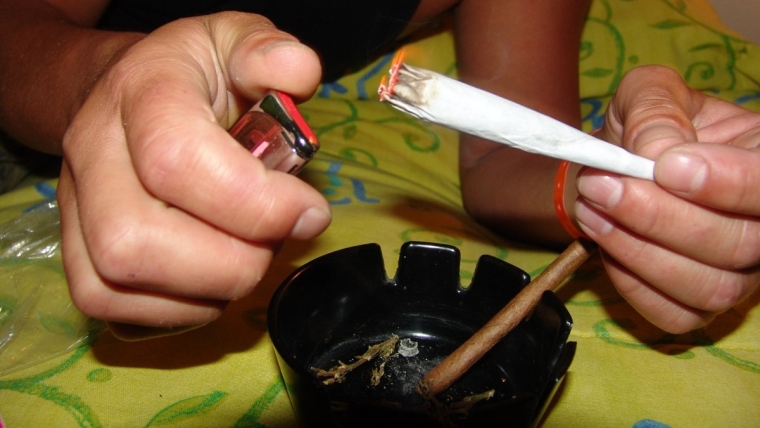
This is a re-post of an article originally published on pundit.co.nz. It is here with permission.
The background to the incident described in the next paragraph is that I was involved in a multidisciplinary international working party setting standards for measuring the cost of substance abuse. The report is published by the World Health Organization.
Our Dutch colleague was a tax accountant, coming from a more liberal drugs regime than most of us. He once remarked that the purpose of criminalisation of drugs was to prevent substance abuse so that essentially it was a health measure. The economists in the room went on alert. Few economists have much competence on law and order matters; Here was a way we could think about criminalisation.
The natural stance of an economist is to accept voluntary exchange. There is a recognition that this may not always be best for very specific reasons such as immaturity, addiction and where a third party is affected (a.k.a. ‘externalities’). On the whole the profession does not judge what is transacted (although individuals may make moral judgements outside their professional competence).
Criminalisation in this framework is problematic, as our Dutch colleague argued. Yet drug policy frequently starts of with use and supply as a crime. Harm minimisation upends this approach switching from treating drugs as being potentially harmful rather than sinful.. There may be a role for criminalisation but it is part of a policy framework with numerous options, not the ultimate solution. Instead we might choose a legal framework (including taxation) aiming to minimise the damage from substance abuse. The framework is likely to vary from drug to drug; this column is mainly about cannabis.
But first to illustrate the issue with alcohol consumption. Alcohol arrived in New Zealand with Europeans and with that the harm that it can cause ranging from alcoholism to death and injury including to innocent parties. By the end of the nineteenth century there was a strong lobby – the Christian Temperance movement – wanting to prohibit alcohol altogether. Various controls were instituted and referenda were held. In 1919, some 49 percent of voters supported national prohibition. So alcohol consumption with a sinful reputation, continued, with a mass of regulations and controls.
The increasingly complicated control regime was replaced with the Sale of Liquor Act 1989 whose general principles of harm minimisation were continued in the Sale and Supply of Alcohol Act 2012. The act’s objects are:
‘(a) the sale, supply, and consumption of alcohol should be undertaken safely and responsibly; and
‘(b) the harm caused by the excessive or inappropriate consumption of alcohol should be minimised.’
Subsection 2 goes on
‘For the purposes of subsection (1), the harm caused by the excessive or inappropriate consumption of alcohol includes—
‘(a) any crime, damage, death, disease, disorderly behaviour, illness, or injury, directly or indirectly caused, or directly or indirectly contributed to, by the excessive or inappropriate consumption of alcohol; and
‘(b) any harm to society generally or the community, directly or indirectly caused, or directly or indirectly contributed to, by any crime, damage, death, disease, disorderly behaviour, illness, or injury of a kind described in paragraph (a).
This is not to argue that the Act is always successful; there is a view that further measures are needed to reduce harm further. The Act’s objective sets a standard by which we can judge such things.
The proposed Cannabis Legalisation and Control Bill had a not dissimilar provision.
‘The purpose of this Act is to authorise, regulate and control the cultivation processing and use of cannabis in New Zealand with the intent of reducing harms for cannabis use to individuals, families, whanau, and communities ...’
So far so good, but it is then followed by ten (sic) prescriptive paragraphs about how the legislation is going to do it. (Few people would have voted in the referendum realising they were voting for this detailed package.)
The referendum did not pass: 51% against and 49% for, in a similar proportion to the 1919 referendum but the other way around. My guess is that while one side did not like the existing legislation and the other did not like the proposed legislation, a goodly proportion of both sides did not like either.
What next? A small minority, rejecting elective democracy, seem to think that parliament should go ahead and pass the legislation anyway. (I suppose they conclude that if Donald Trump thinks he should remain POTUS with 47%, 49% amounts to an overwhelming endorsement.) One would hope parliament would not be so cavalier with democracy.
Does that mean there can be no change? Despite the majority rejection of the bill, parliament is entitled to look for a compromise. It might start off with a clear statement that the purpose of any drugs legislation is to minimise harm, perhaps using analogous terminology to the alcohol legislation.
Where we go after having established the overarching principle of harm minimisation is outside the economist’s remit. I am guessing it would lead to some kind of decriminalisation but restrictions on commercial supply. (The promotion and lobbying record of the alcohol and tobacco industry makes one ever so cautious about commercialisation.) I would expect the new regime to change the approach of health and social services and the police to dealing with cannabis users.
Advocates will face a nice choice. The more liberal the regime they demand, the more likely their proposals will have to go to another referendum. On the other hand, a more limited liberalisation is likely to be acceptable to the majority of the populace without a referendum, especially if it gets a good parliamentary majority. Taking the more limited path, the changes could well be introduced by the end of 2022. Parliament would prefer not to have it hanging around in election year.
You may wonder if there is a subtext here about the harder drugs. I do not know enough about them to judge how to minimise their harm. That should remain the social objective, but it may be that criminalisation of supply of hard drugs has a much greater role there than it has for alcohol, cannabis or tobacco.
PS. The Drug and Substance Checking Legislation Bill, which will allow drug and substance checking services to operate legally in New Zealand., is an example of a harm minimisation measure. It was introduced while this column was in draft,
Brian Easton, an independent scholar, is an economist, social statistician, public policy analyst and historian. He was the Listener economic columnist from 1978 to 2014. This is a re-post of an article originally published on pundit.co.nz. It is here with permission.
1 Comments
The cost of alcohol to society is estimated to be $7.5 billion each year (https://www.actionpoint.org.nz/cost-of-alcohol-to-society ), and yet it is legal. Legalisation is therefore not an indicator of harm minimalisation - whether it be alcohol or cannabis, what must change are societal attitudes to over consumption. The difference between the two however is that the criminalisation of cannabis itself causes harm (https://www.pmcsa.ac.nz/topics/cannabis/ )

We welcome your comments below. If you are not already registered, please register to comment
Remember we welcome robust, respectful and insightful debate. We don't welcome abusive or defamatory comments and will de-register those repeatedly making such comments. Our current comment policy is here.